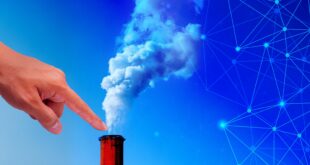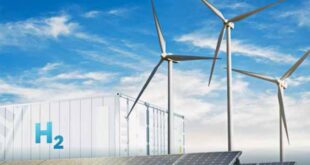Qatar remains by far the biggest exporter of liquefied natural gas (LNG) in the Middle East, and one of the top three in the world, together with the U.S. and Australia. Alongside this, though, since Russia’s invasion of Ukraine on 24 February 2022, it has accomplished something of a geopolitical miracle. It has overcome extraordinary odds to become the most trusted mediator in the region by both sides of the geopolitical divide – the U.S. and its allies on the one side, and the China-Russia axis and its allies on the other. It has even managed to do so without incurring the wrath of former top Middle East mediator, Saudi Arabia, despite Qatar having been subject to a rancorous Riyadh-led diplomatic embargo from 2017 to 2021, during which time the Emirate also withdrew from OPEC. The critical importance of LNG to the world energy market, and the likelihood of further conflicts emanating out of the Middle East to add to the rolling war in Ukraine, means even more responsibility rests on this tiny Emirate in 2024.
All conflicts involving any major participants in the global oil and gas market threaten the world’s delicate energy supply and demand balance, and place even more importance on LNG as the primary source of emergency supplies. In the aftermath of Russia’s 2022 invasion of Ukraine, it was vital to the interests of the U.S. and its European allies – both from the security perspective of NATO and from the intertwined economic perspective of the European Union (E.U.) political and economic alliance – that substitute sources of gas and oil be found as quickly as possible to compensate for those that would be lost top three oil and gas producer Russia. Plans were put into place for Europe to reduce its gas and oil needs from Russia over time, and in the interim to attempt to reduce their energy usage as winter 2022 approached, as analyzed in depth in my new book on the new global oil market order. The reality was that without new energy supplies flowing into the continent before and during winter, any political resolve the E.U. had to implement meaningful energy sanctions against Russia was liable to break, as it had done when Russia invaded Ukraine in 2014 and annexed the vast Crimea region. In this situation, LNG was the obvious emergency energy source, and remains so to this day. It is readily available in the spot markets and can be moved very quickly to anywhere required, unlike gas or oil sent through pipelines. Unlike pipelined energy as well, the movement of LNG does not require the build-out of vast acreage of pipelines across varying terrains and the associated heavy infrastructure that supports it. In essence, LNG supplies are the ‘swing gas supply’ in any global gas supply emergency, and the new world order as delineated in my new book looks set to remain in a rolling emergency for years to come.
At that time in 2022, before the U.S. dramatically ramped up its own LNG production to become the world’s top supplier, Qatar was the number one global exporter, slightly ahead of Australia. As it stands now, the Emirate will account for about 40 percent of all new LNG supplies across the globe by 2029, according to comments from its government last week. These projections are in line with independent industry figures, with the huge increase in production set to come from the ongoing expansion of its North Field projects. This 6,000 square kilometer field is one part of the two that constitute the world’s biggest gas field. The other 3,700 square kilometer section is Iran’s South Pars gas field, which accounts for around 40 percent of the Islamic Republic’s total estimated 33.8 trillion cubic meters (tcm) of gas reserves and about 75 percent of its gas production. Qatar’s North Field expansion program will see six major new developments in the North Field East (NFE) and North Field South (NFS) to 2029. Four new ‘trains’ (production facilities) – each with 8 million metric tonnes per annum (mtpa) – will be built on the NFE site, and two (with the same production capacity) in the NFS site, totaling 48 mtpa of new LNG production.
The division of Qatar’s LNG resources to foreign powers both before and after Russia’s invasion of Ukraine in 2022 has been a masterclass in global diplomacy and has done much to cement its growing reputation as the Middle East’s ‘honest broker’ between the superpowers. Both before, during, and after the start of Russian hostilities in Ukraine on 24 February that year, the Emirate had concluded multiple long-term LNG supply deals with China. However, the end of March 2022 saw the first of a series of strategically crucial meetings for the U.S. and its allies with senior representatives from Qatar aimed not only at securing vital LNG supplies urgently for the West and East but also at moving the Emirate more decisively into the U.S.’s sphere of influence. Following one such meeting in March between Qatar’s Emir, Sheikh Tamim bin Hamad Al Thani, and German economy minister, Robert Habeck, U.S. President Joe Biden reiterated his view expressed in January of Qatar as a “major non-NATO ally”. Following this, July 2022 saw QatarEnergy sign partnership contracts for the North Field East expansion project with the U.S.’s ExxonMobil and ConocoPhillips, the U.K.’s Shell, Italy’s Eni, and France’s TotalEnergies. QatarEnergy then also signed similar deals for the North Field South expansion project with TotalEnergies, Shell, and ConocoPhillips.
The U.S.’ enormous degree of trust in Qatar was further evidenced by Qatar being assigned the role of key mediator in the deal announced on 11 September that saw five Americans released from prison in Iran. This was to have been a precursor to possibly moving ahead with a new ‘nuclear deal’ draft that has been in discussion for the past two years between the U.S. and Iran. Such a deal was to have constituted a U.S. diplomatic counterpoint to the 10 March resumption of the relationship deal between Iran and Saudi Arabia, brokered by China. It would also have eased pressures at that time on the oil price by bringing around 3 million barrels per day of Iranian oil and equivalents back into the legitimate oil market. Qatar further showed its mettle to the U.S. when it agreed to freeze the $6 billion in funds destined for Iran in exchange for the American prisoners. This freeze was in response to Iran’s response to the 7 October murders, rapes, and kidnappings of Israeli civilians by the Tehran-backed Palestinian terrorist organization Hamas.
At the same time, though, Qatar continued to maintain cordial relations with China. As has been seen repeatedly in recent months, a core U.S. strategy now – very similar to the ‘triangular diplomacy’ promulgated by the late Henry Kissinger, also analysed in full in my new book – is to gradually soften the allegiance of China to Russia. These efforts by Washington have been helped enormously both by Russia’s extremely poor military and political showing in Ukraine and by the difficulty China’s economy has experienced in bouncing back from three years of Covid. According to high-level sources close to the U.S. government exclusively spoken to by OilPrice.com in November, it is not entirely correct to say that at the recent meeting between China’s President Xi Jinping and U.S. President Joe Biden a US$900 billion bailout for China was formally requested. It is true, though, according to the White House sources, that Xi’s team floated the idea to Biden’s team of a swap of U.S. Treasury bills and their Chinese renminbi equivalents in the amount of US$770 billion. According to the sources, U.S. Secretary of the Treasury, Janet Yellen, was the decision maker, and she blocked the talks from going any further. This strategy, and Qatar’s vital role in it – and in the global energy markets – remain very much in play going into 2024.

 Iran Energy News Oil, Gas, Petrochemical and Energy Field Specialized Channel
Iran Energy News Oil, Gas, Petrochemical and Energy Field Specialized Channel



